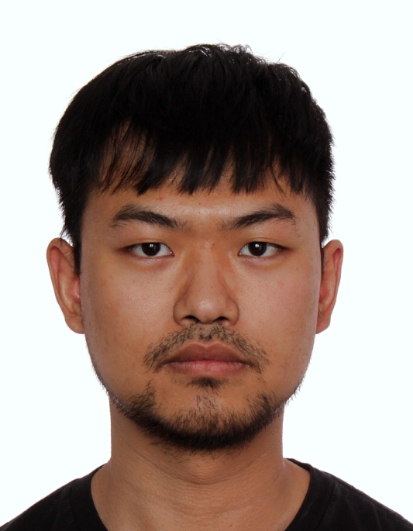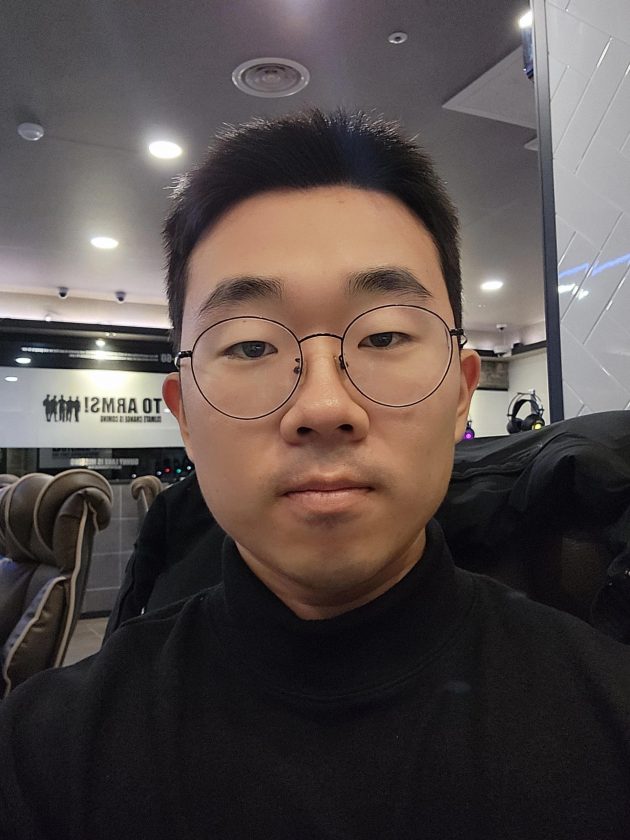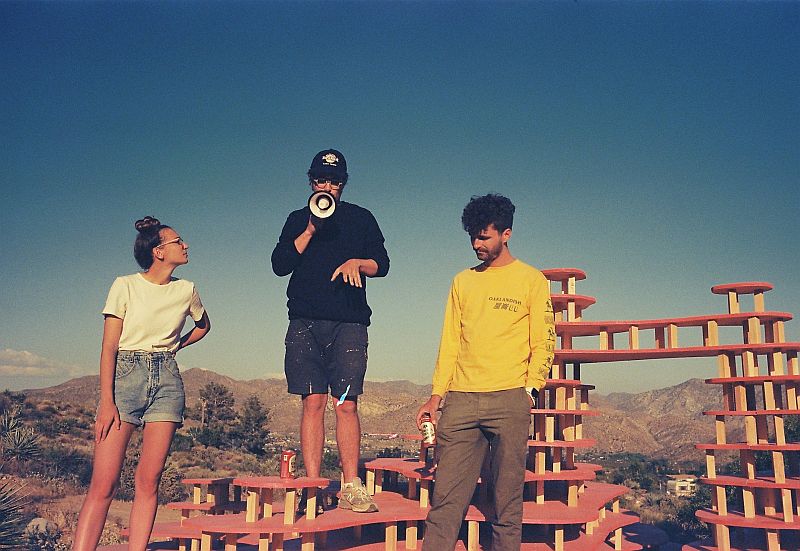
This week we have been lucky enough to have the founders behind i/thee Design Studio, US in our interview segment. The design-build studio is run by three best friends – Neal Lucas Hitch, Martin Francis Hitch and Kristina Fisher – with projects around the globe.
One of the best parts about the architecture firm is that their construction is an extension of nature’s own beauty. I personally liked most of their constructions, especially the self-supporting, papier-mache structures. Whenever I see it, I feel as if the structure is hugging our mother nature.
Their clients include the Imperial Valley Desert Museum, Hello Wood Studio, Space Saloon Design Laboratory, the Hawaiian Mission Houses Historic Site and Archives, Judson University, Global Inheritance, Roundhouse Platform to name is few.
Without further ado, let’s dive directly into the interview to learn more about i/thee Design Studio and the practice’s approach. I’m sure you’ll enjoy reading it as much as I did while taking these rounds of conversations.
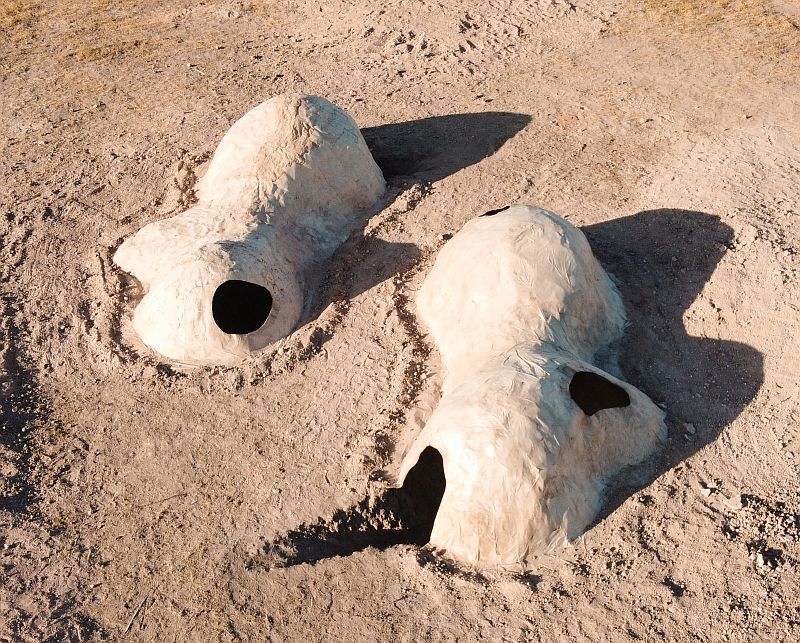
Tell us about your current business. What are you doing exactly?
Neal Lucas Hitch: The idea with i/thee was always to operate more like a band than an architecture firm. We are all very good friends and are driven, more than anything, by a passion to express a shared vision. We work on all kinds of projects at contrasting scales—including everything from printing T-shirts to building houses. The throughline of all this though, is a focus on experimentation, specifically as it relates to the analog. We build most everything we design, which often finds us jumping between cities and countries in a kind of nomadic spree. It can be chaotic but it is also very fun.
I liked the idea of creating mirrored holes in the ground so that the roofs cast go over the opposite hole. Please tell us about your eco-dwelling project, Agg Hab?
Neal Lucas Hitch: This was a project we developed in partnership with our friends at Roundhouse, a design studio and cultural platform based in Los Angeles. The idea was to create a papier-mâché prototype for a larger development we have been planning. We wanted to make something very primal yet also fantastical and were inspired by a kind of cartoon or children’s book like aesthetic. We wanted it to feel like Patric’s house from SpongeBob, or that magic tent from Harry Potter—it looks little from the outside, but on the inside, it’s ever-expansive.
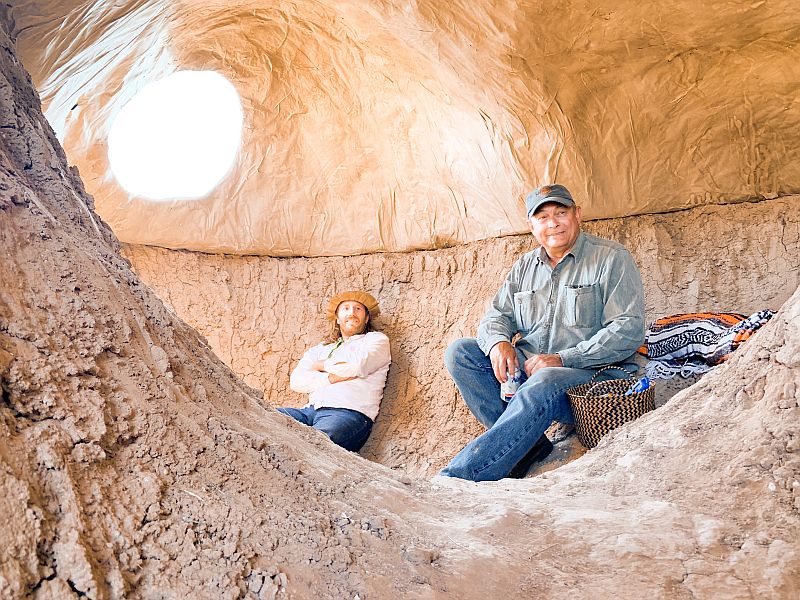
We were very interested in the process of digging—one of the cheapest and most basic forms of construction and wanted to explore what you could make with as few resources as possible. The design is a very simple and self-contained gesture. First, two mirrored holes were dug in the ground, then those holes were cast with papier-mâché. Finally, the casts were removed and flipped over to become the roofs of the formwork. In this way, the project is necessarily bound to the place it was constructed—it cannot be separated from the earth because half of the house is, in fact, part of the earth.
How far am I correct in holding the view, that all your designs are an extension of the topography on which it is created. Be it the Ocotillo Observatory or the Ebb and Flow, your work is an extension of nature’s own beauty?
Neal Lucas Hitch: All of our projects aim to interact with their environments in intimate ways. I think definitely with the projects you have mentioned, the idea was for them to become extensions of the ground. Ebb and Flow, for example, was designed by literally tracing the topography at full scale on-site. Other projects of ours, though, have more nuanced relationships with their environments. The Kerplunk house, for instance, is suspended above the ground on a series of haphazard columns. The idea here was less about an extension and more about letting the building adaptively respond to its immediate environment. We wanted the house to have as little contact with the ground as possible, almost like a tree-house. The only problem was that it was built in a desert where there were not any trees. So, we had to build our own.
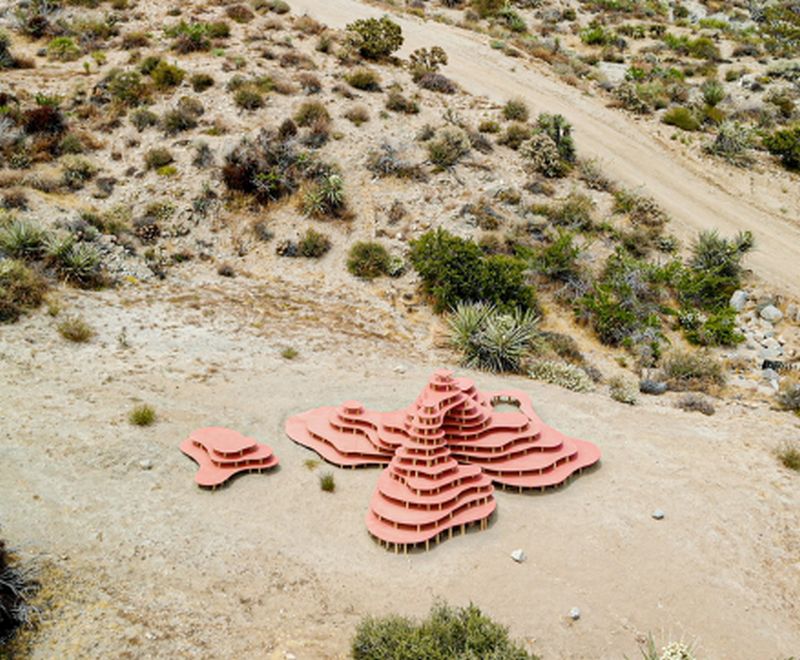
How do you balance function with aesthetic appeal?
Martin Francis Hitch: Well, that’s the age-old question, isn’t it? It’s hard to argue with the ‘form follows function’ mantra, but honestly, I don’t think you can separate aesthetics from the rest of the design process. We built a project called Ghost House a few years ago in the California desert, the conceit of which was that the design was dictated wholly by the environment. We basically draped a giant, glue-soaked canvas over a wooden frame and let it dry in the wind, but every step along the way, there are aesthetic choices. Ultimately, I think every designer’s goal is to find that balance of an object or a building or space that is both beautiful and functional.
Neal Lucas Hitch: I think in a way, the goal of all our projects is to fuse form, function, tectonics, and materiality, so they are inseparable. Typically, architects start designing by making a plan, extruding it into a form, and then applying materials to it. With the Agg Hab, though, it is just one idea—dig, cast, flip—and this idea is the catalyst for how the building functions, what it is made of, how it stands up, and what the experience of it is. It is very simple, and in this sense, Agg Hab is just the latest iteration in trying to achieve this harmony.
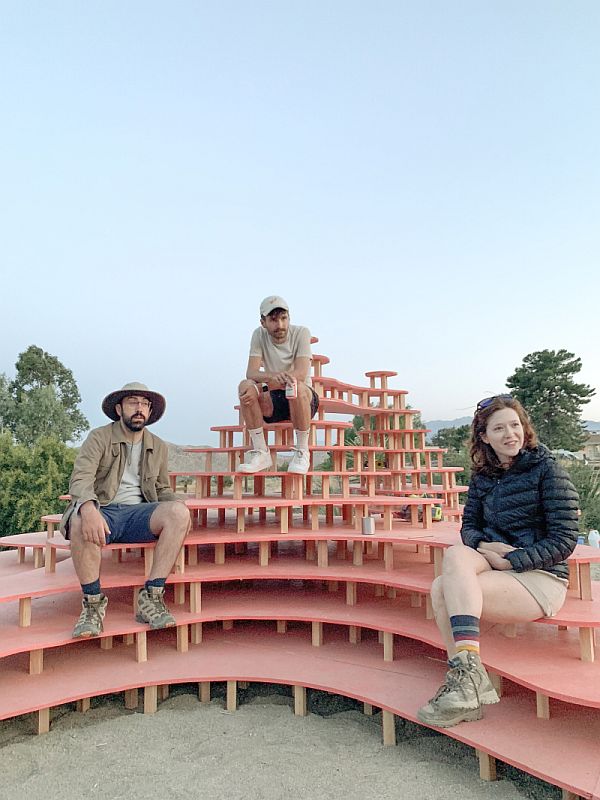
Architects are visionaries, artists, they create “art” right from the scratch by constantly dwelling in imagination. How do you come up and bring those gems from your oceanic imaginations?
Martin Francis Hitch: That’s a very flattering characterization of what we do and somewhat ties into the above question. It’s a different process every time. Especially because as a studio so often we are working with each other remotely (for the past two years none of us have lived in the same city). It takes a lot of different forms. We’re in nearly constant communication about projects and design ideas, which creates a well of inspiration to draw from when we really sit down to develop a specific project.
When buildings look good outside, we feel good inside, in fact our world is improved. Architect Philip Johnson once said, “Architecture is not about words. It’s about tears”. What’s your take on this?
Kristina Fisher: I believe that design can and does influence human physiological and psychological well-being. Architecture is not only an image—it also has tactile and experiential qualities that have the ability to elicit emotional responses and influence our memories of a place.
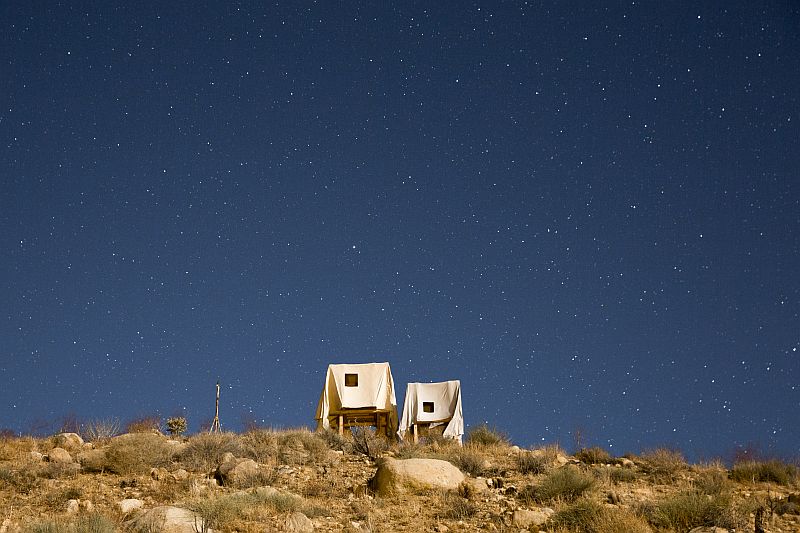
What are the growing trends in architecture especially when it comes to an eco-friendly lifestyle? Minimalism and tiny living are the first two things that come to my mind.
Kristina Fisher: I think people need to understand the patterns of the environment they are living in. We have to think of ourselves as contributors to ecological patterns and not as independent actors. I am interested in how we can transform historical traditions into contemporary practice in order to better care for our local ecologies. I think the trend now is to become more in tune with nature, and a lot of times, that will mean using fewer resources and living in smaller spaces.
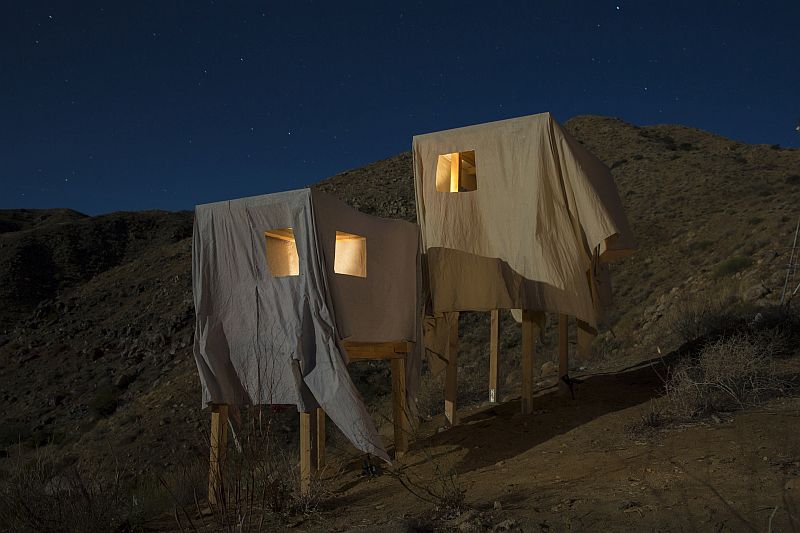
What do you think is the next evolution in sustainable design?
Neal Lucas Hitch: I think all designers need to be conscious and personally responsible for what they produce and how it impacts the planet. It is easy to push the responsibility elsewhere: to more established firms, to organizations with more money/resources. It was a big moment for me when I realized that there aren’t special people who deal with these issues. We are designers, and the onus is on us to design/build responsibly. I think there is a lot architects can learn from the cutting-edge culinary scene. A lot of star-chefs are making really weird and expressive dishes, while at the same time sourcing their ingredients responsibly. I’m interested in how architects can start to think of materials on a more personal level. To paraphrase something the food writer Michael Pollan said, ‘you can eat whatever you want, just make it yourself.’ I think maybe a similar philosophy can be practiced in architecture. Probably the most responsible thing we can do is to actually construct the things we are designing. All the projects in the i/thee portfolio thus far were built by our team on-site alongside community members and students.
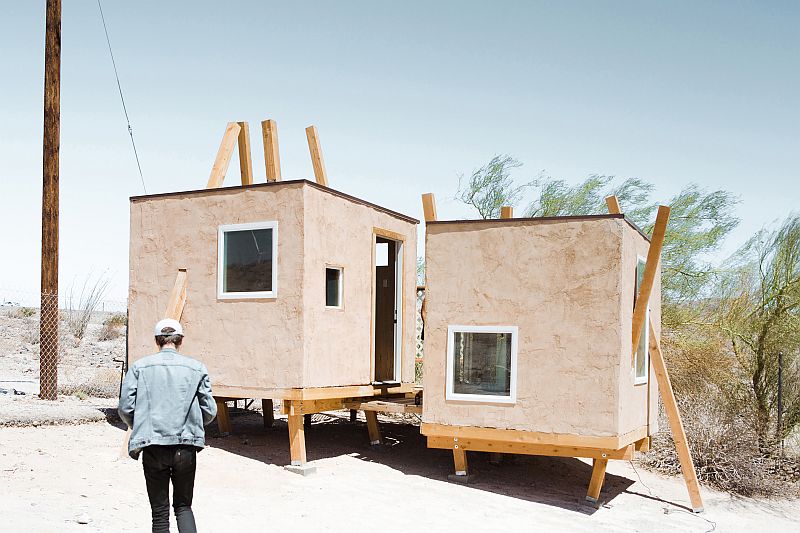
Which project(s) anywhere in the world do you consider exemplary?
Martin Francis Hitch: I had the pleasure of seeing Junya Ishigami’s Freeing Architecture exhibition in Paris a few years ago, and I have yet to encounter a more inspiring body of work. I just happened to be in Paris while the show was running, and Neal turned me on to it and told me I had to go while I was there. The exhibition displays his projects as a series of large-scale models that are presented as the architecture, not just representations of it.
I’m also quite impressed by the Seminole Hard Rock hotel. It’s a giant guitar-shaped hotel, and it gets clowned on for being corny, but in terms of a bold vision executed without compromise, I find it unironically inspiring.
Someone comes up to you and says, “I want to be just like you. I wanna be an architect”. What advice would you give?
Kristina Fisher: I would say to pursue your goals, but make sure to keep your hobbies intact. Architecture can feel particularly all-encompassing at times. I find that the best architecture is drawn from real-world experiences, and sometimes the profession itself can be a hindrance to that.
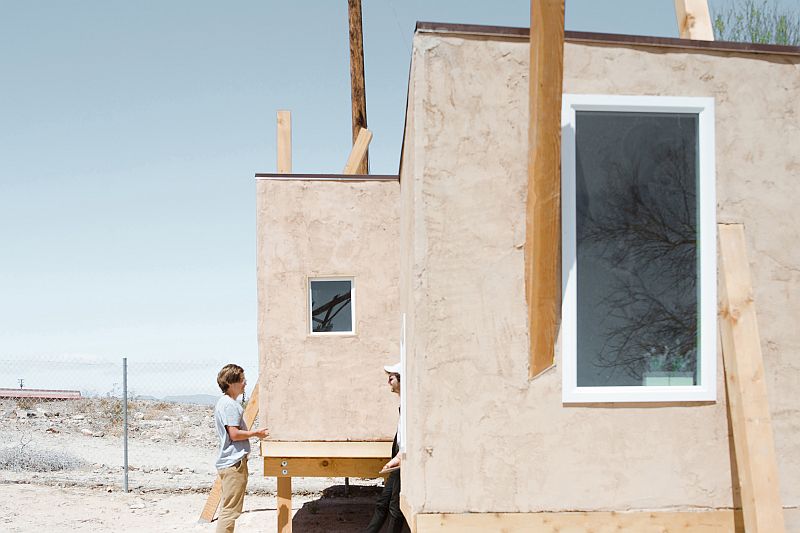
Quick bits:
One advice you’d like to give to your younger self?
Neal Lucas Hitch: I’m not sure, but I am very interested in what advice my future self would give to my present self.
What is one of the things you would put on your “bucket” list?
Kristina Fisher: I have always wanted to visit every continent. I am currently planning a trip to Southeast Asia as soon as the pandemic is over.
Neal Lucas Hitch: My plan is to follow Kristina.
If you were a superhero what would your powers be?
Neal Lucas Hitch: I used to be obsessed with superheroes and would invent them in my free time as a child. I think now I am more interested in the ways the world is already super, and how I can be a part of it. I just finished Our Planet on Netflix and was amazed by the alien beauty of the natural world. We are already living in a fantasy.
What is your favorite movie quote?
Martin Francis Hitch: “Life is not the amount of breaths you take, it’s the moments that take your breath away.” -Alex Hitchens
Hitch was a go-to movie in our household – not just because of our shared name. For as problematic a scheme as he’s running, he does drop some real wisdom. I also truly believe that Albert and Allegra were meant for each other.
What would you do on Mars for fun?
Martin Francis Hitch: Probably dig two mirrored holes and coat the interior with papier-mâché—in all honesty, I think the Agg Hab would make a pretty cool mars habitat, and I REALLY like the idea of being Mars’s premier design firm.
If you could get yourself anything, what would you get?
Kristina Fisher: We have been looking for a storefront to host our pop-up wine shop/studio. That would be nice.
If a movie was made of your life what genre would it be, who would play you?
Kristina Fisher: I think watching my life as a movie might be my worst nightmare.
If you could trade lives with anyone for a day who would it be and why?
Kristina Fisher: My cat. I have always been jealous of her simple and relaxed life.
If you were stranded on a tropical island what 2 things would you want with you?
Neal Lucas Hitch: Two more islands
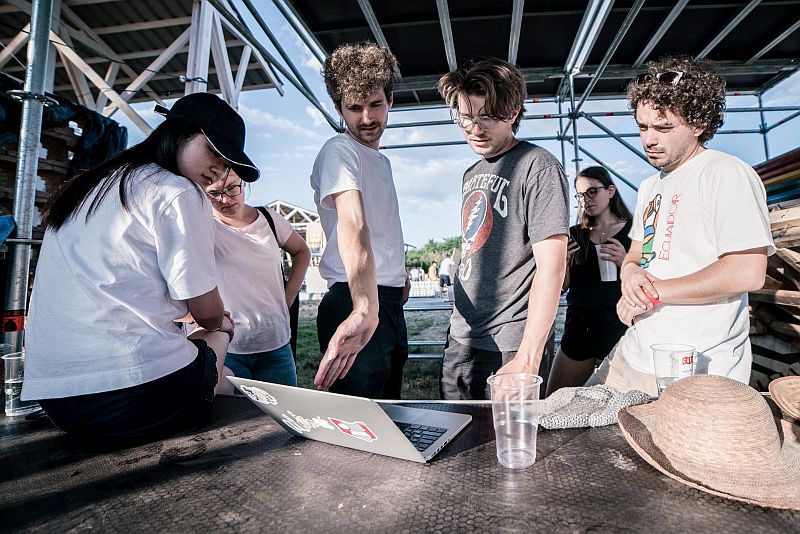
Neal, Martin and Kristina, it has been a real pleasure! I can’t thank you all enough. Your work is truly an inspiration. We look forward to visit you again and see more of your creative effort in the future. We wish you all the very best for all your future endeavour.

